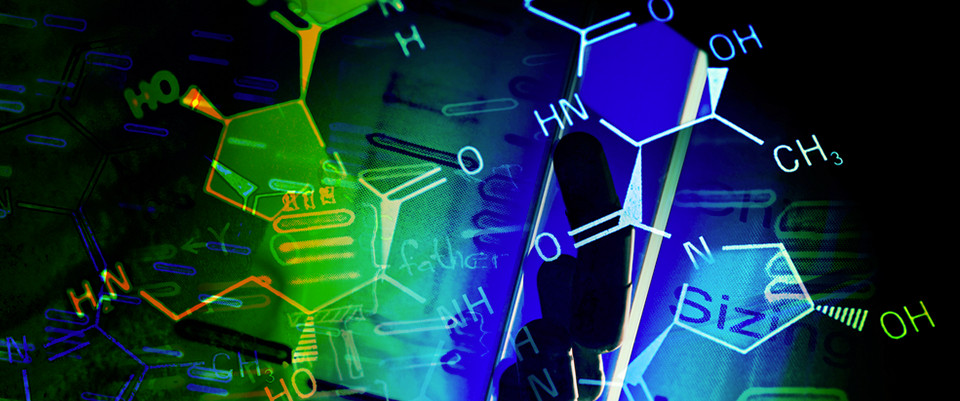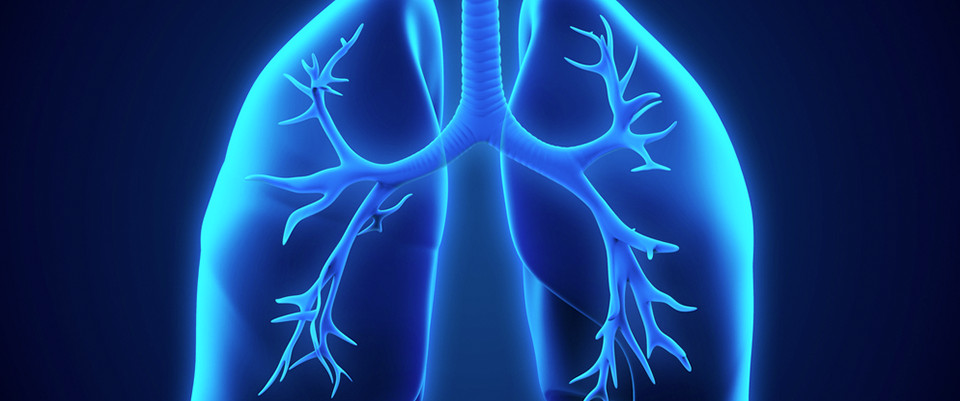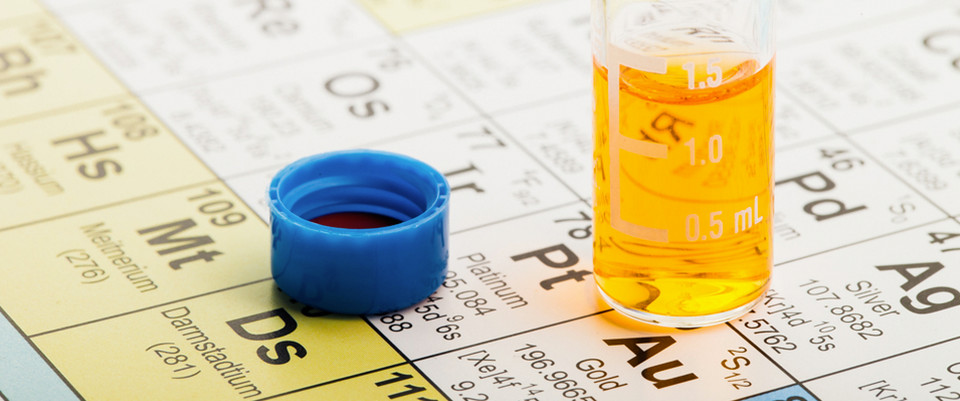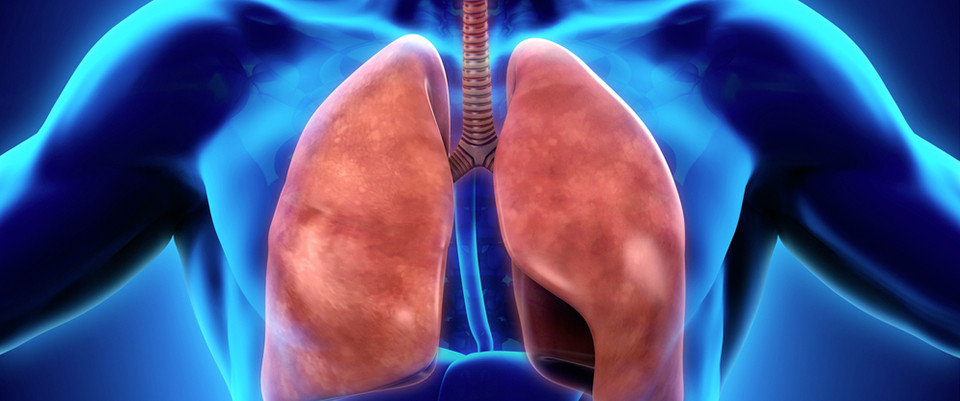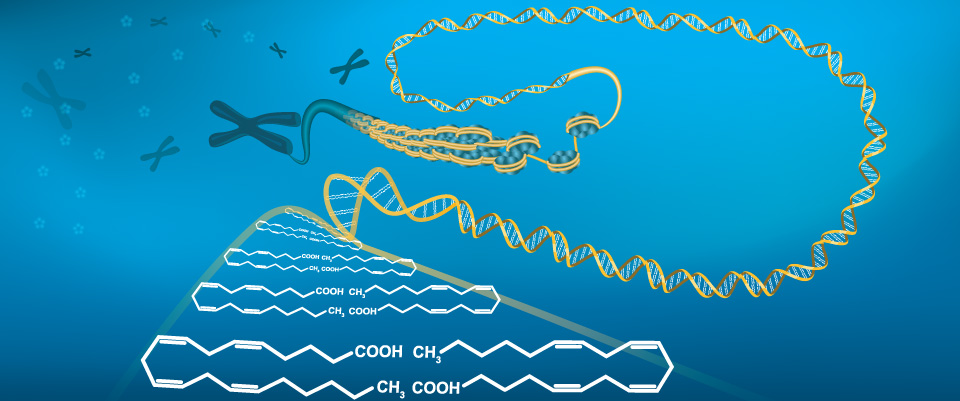PubMed
Integrated Proteomic and Metabolomic Analyses Show Differential Effects of Glucose Availability in Marine <em>Synechococcus</em> and <em>Prochlorococcus</em>
Microbiol Spectr. 2023 Feb 1:e0327522. doi: 10.1128/spectrum.03275-22. Online ahead of print.ABSTRACTWe compared changes induced by the addition of 100 nM and 5 mM glucose on the proteome and metabolome complements in Synechococcus sp. strains WH8102, WH7803, and BL107 and Prochlorococcus sp. strains MED4, SS120, and MIT9313, grown either under standard light conditions or in darkness. Our results suggested that glucose is metabolized by these cyanobacteria, using primarily the oxidative pentoses and Calvin pathways, while no proof was found for the involvement of the Entner-Doudoroff pathway in this process. We observed differences in the effects of glucose availability, both between genera and between Prochlorococcus MED4 and SS120 strains, which might be related to their specific adaptations to the environment. We found evidence for fermentation in Prochlorococcus sp. strain SS120 and Synechococcus sp. strain WH8102 after 5 mM glucose addition. Our results additionally suggested that marine cyanobacteria can detect nanomolar glucose concentrations in the environment and that glucose might be used to sustain metabolism under darkness. Furthermore, the KaiB and KaiC proteins were also affected in Synechococcus sp. WH8102, pointing to a direct link between glucose assimilation and circadian rhythms in marine cyanobacteria. In conclusion, our study provides a wide overview on the metabolic effects induced by glucose availability in representative strains of the diverse marine picocyanobacteria, providing further evidence for the importance of mixotrophy in marine picocyanobacteria. IMPORTANCE Glucose uptake by marine picocyanobacteria has been previously described and strongly suggests they are mixotrophic organisms (capable of using energy from the sun to make organic matter, but also to directly use organic matter from the environment when available). However, a detailed analysis of the effects of glucose addition on the proteome and metabolome of these microorganisms had not been carried out. Here, we analyzed three Prochlorococcus sp. and three Synechococcus sp. strains which were representative of several marine picocyanobacterial clades. We observed differential features in the effects of glucose availability, depending on both the genus and strain; our study illuminated the strategies utilized by these organisms to metabolize glucose and showed unexpected links to other pathways, such as circadian regulation. Furthermore, we found glucose addition had profound effects in the microbiome, favoring the growth of coexisting heterotrophic bacteria.PMID:36722960 | DOI:10.1128/spectrum.03275-22
Quercetin modulates the liver metabolic profile in a chronic unpredictable mild stress rat model based on metabolomics technology
Food Funct. 2023 Jan 26. doi: 10.1039/d2fo03277e. Online ahead of print.ABSTRACTDepression is the most prevalent psychiatric disease, and its pathogenesis is still unclear. Currently, studies on the pathogenesis of depression are mainly focused on the brain. The liver can modulate brain function via the liver-brain axis, indicating that the liver plays an important role in the development of depression. This study aims to explore the protective effect of quercetin against chronic unpredictable mild stress (CUMS)-induced metabolic changes and the corresponding mechanisms in the rat liver based on untargeted metabolomics technology. In this study, 96 male rats were divided into six groups: control, different doses of quercetin (10 mg per kg bw or 50 mg per kg bw), CUMS, and CUMS + different doses of quercetin. After 8 weeks of CUMS modeling, the liver samples were collected for metabolomics analysis. A total of 17 altered metabolites were identified, including D-glutamic acid, S-adenosylmethionine, lithocholylglycine, L-homocystine, prostaglandin PGE2, leukotriene E4, cholic acid, 5-methyltetrahydrofolic acid, taurochenodeoxycholic acid, S-adenosylhomocysteine, deoxycholic acid, folic acid, L-methionine, leukotriene C5, estriol-17-glucuronide, PE, and PC, indicating that methionine metabolism, bile acid metabolism, and phosphatidylcholine biosynthesis are the major pathways involved in CUMS-induced hepatic metabolic disorders. Hepatic methylation damage may play a role in the pathophysiology of depression, as evidenced by the first discovery of the abnormality of hepatic methionine metabolism. Abnormal changes in hepatic bile acids may provide stronger evidence for depression pathogenesis involving the microbiota-gut-brain axis, suggesting that the liver is involved in depression development and may be a treatment target. The quercetin treatment alleviated the CUMS-induced liver metabolism disorder, suggesting that quercetin may protect against depression by regulating liver metabolism.PMID:36722921 | DOI:10.1039/d2fo03277e
Application of emerging technologies for gut microbiome research
Singapore Med J. 2023 Jan;64(1):45-52. doi: 10.4103/singaporemedj.SMJ-2021-432.ABSTRACTMicrobiome is associated with a wide range of diseases. The gut microbiome is also a dynamic reflection of health status, which can be modified, thus representing great potential to exploit the mechanisms that influence human physiology. Recent years have seen a dramatic rise in gut microbiome studies, which has been enabled by the rapidly evolving high-throughput sequencing methods (i.e. 16S rRNA sequencing and shotgun sequencing). As the emerging technologies for microbiome research continue to evolve (i.e. metatranscriptomics, metabolomics, culturomics, synthetic biology), microbiome research has moved beyond phylogenetic descriptions and towards mechanistic analyses. In this review, we highlight different approaches to study the microbiome, in particular, the current limitations and future promise of these techniques. This review aims to provide clinicians with a framework for studying the microbiome, as well as to accelerate the adoption of these techniques in clinical practice.PMID:36722516 | DOI:10.4103/singaporemedj.SMJ-2021-432
Metabolomics Reveals Novel Serum Metabolic Signatures in Gastric Cancer by a Mass Spectrometry Platform
J Proteome Res. 2023 Feb 1. doi: 10.1021/acs.jproteome.2c00295. Online ahead of print.ABSTRACTGastric cancer (GAS) is one of the malignant tumors of the gastrointestinal system. Alterations in metabolite composition can reflect pathological processes of GAS and constitute a basis for diagnosis and treatment improvements. In this study, a total of 301 serum samples from 150 GAS patients at different tumor-node-metastasis (TNM) stages and 151 healthy controls were collected. Mass spectrometry platforms were performed to investigate the changes in GAS-related metabolites and explore the new potential serum biomarkers and the metabolic dysregulation associated with GAS progression. Twelve differential metabolites (ethyl 2,4-dimethyl-1,3-dioxolane-2-acetate, D-urobilinogen, 14-HDoHE, 13-hydroxy-9-methoxy-10-oxo-11-octadecenoic acid, 5,6-dihydroxyprostaglandin F1a, 9'-carboxy-gamma-tocotrienol, glutaric acid, alanine, tyrosine, C18:2(FFA), adipic acid, and suberic acid) were identified to establish the diagnosis model for GAS. The defined biomarker panel was also statistically significant for GAS progression with different TNM stages. KEGG (Kyoto Encyclopedia of Genes and Genomes) enrichment revealed the metabolic dysregulation associated with GAS progression. In conclusion, a diagnostic panel was established and validated, which could be used to further stage the early and advanced GAS patients from healthy controls. These findings may provide useful information for explaining the GAS metabolic alterations and try to facilitate the characterization of GAS patients in the early stage.PMID:36722497 | DOI:10.1021/acs.jproteome.2c00295
Effects of sheep whey protein combined with Fu brick tea polysaccharides and stachyose on immune function and intestinal metabolites of cyclophosphamide-treated mice
J Sci Food Agric. 2023 Feb 1. doi: 10.1002/jsfa.12477. Online ahead of print.ABSTRACTBACKGROUND: Sheep whey protein (SWP), Fu brick tea polysaccharides (FBTP) and stachyose (STA) have been shown to improve immunity, but little is known about the regulatory effect of SWP, FBTP, STA and their combined formula (CF) on immune function and intestinal metabolism of immunosuppressed mice induced by cyclophosphamide (CTX).RESULTS: Administration of SWP, FBTP, STA or CF restored the levels of body weight, immune organ index, immune organ morphology, cytokines and immunoglobulins in CTX immunosuppressed mice. Interestingly, CF improved all the mentioned parameters more effective than administration of SWP, FBTP or STA alone. In addition, CF was more effective to increase the levels of intestinal immune-related gene expression than FBTP, SWP or STA alone in immunosuppressed mice, suggesting that CF exhibited excellent intestinal immune regulation function. CF also significantly improved cecal concentrations of short-chain fatty acids of CTX-treated mice. Furthermore, metabolomics analysis demonstrated that CF recovered the levels 28 metabolites associated with the CTX treatment to the levels of normal mice.CONCLUSION: Conclusively, these findings suggested that CF as a functional food combination of SWP, FBTP and STA could promote the immune function to against human diseases, which providing theoretical support for the co-ingestion of sheep whey protein and functional sugars as a feasible strategy for improving the body immunity in the future. This article is protected by copyright. All rights reserved.PMID:36722467 | DOI:10.1002/jsfa.12477
Transcriptomic and Metabolomic Analysis Reveals a Protein Module Involved in Pre-harvest Apple Peel Browning
Plant Physiol. 2023 Feb 1:kiad064. doi: 10.1093/plphys/kiad064. Online ahead of print.ABSTRACTPeel browning is a natural phenomenon that adversely affects the appearance of fruits. Research on the regulation of browning in apples (Malus × domestica Borkh.) has mainly focused on post-harvest storage, while studies at the pre-harvest stage are relatively rare. Apple is an economically important horticultural crop prone to peel browning during growth, especially when the fruits are bagged (dark conditions). The present study's integrated transcriptomics and metabolomics analysis revealed that pre-harvest apple peel browning was primarily due to changes in phenolics and flavonoids. The detailed analysis identified MdLAC7's (laccase 7) role in the pre-harvest apple peel browning process. Transient injection, overexpression, and CRISPR/Cas9 knockout of the MdLAC7 gene in apple fruit and calli identified vallinic acid, anthocyanidin, tannic acid, sinapic acid, and catechinic acid as its catalytic substrates. In addition, yeast one-hybrid (Y1H) assay, electrophoretic mobility shift assay (EMSA), luciferase (LUC) reporter assay, and ChIP-PCR analysis revealed that MdWRKY31 binds to the promoter of MdLAC7 and positively regulates its activity to promote peel browning of bagged fruits (dark conditions). Interestingly, upon light exposure, the light-responsive transcription factor MdHY5 (ELONGATED HYPOCOTYL 5) bound to the promoter of MdWRKY31 and inhibited the gene's expression, thereby indirectly inhibiting the function of MdLAC7. Subsequent analysis showed that MdHY5 binds to the MdLAC7 promoter at the G-box1/2 site and directly inhibits its expression in vivo. Thus, the study revealed the MdLAC7-mediated mechanism regulating pre-harvest apple peel browning and demonstrated the role of light in inhibiting MdLAC7 activity and subsequently reducing peel browning. These results provide theoretical guidance for producing high-quality apple fruits.PMID:36722358 | DOI:10.1093/plphys/kiad064
Comparison of Serum Metabolomics Pathways and Patterns between Patients with Major Depressive Disorder with and without Type 2 Diabetes Mellitus: An Exploratory Study
J Integr Neurosci. 2023 Jan 11;22(1):13. doi: 10.31083/j.jin2201013.ABSTRACTBACKGROUND: A close relationship exists between major depressive disorder (MDD) and diabetes mellitus. The metabolomic difference and similarity between patients with and without diabetes mellitus have not been well studied in the context of MDD. We aimed to examine these differences and common serum metabolomics patterns, pathways and biomarkers that can comprehensively reflect the pathogenetic difference and similarity between these MDD groups.METHODS: We performed a metabolomics analysis of serum samples of healthy controls (n = 6), patients with MDD and type 2 diabetes mellitus (n = 13), and patients with MDD without type 2 diabetes mellitus (n = 27). Metabolomics analysis was conducted using capillary electrophoresis Fourier transform mass spectrometry and a candidate compound was assigned to the 496 (290 cation, 206 anion) peaks. Moreover, we evaluated the sensitivity and specificity of the candidate biomarkers for distinguishing between MDD patients with or without type 2 diabetes mellitus.RESULTS: Principal component analysis revealed no clear distinction among the three groups, while naive partial least squares discriminant analysis yielded three relatively good and distinct populations based on the first principal component. Energy conversion by the tricarboxylic acid cycle represented the highest percentage among the top 30 positive factors of the first principal component, and glutamate metabolism and urea cycle represented the highest percentage among the top 30 negative factors of the first principal component. Synthesis and degradation of ketone bodies had high impact in MDD with type 2 diabetes mellitus group and taurine and hypotaurine metabolism had high impact in MDD without type 2 diabetes mellitus group for the pathway.CONCLUSIONS: Patterns of serum metabolites may be different among MDD with type 2 diabetes mellitus, MDD without type 2 diabetes mellitus, and healthy controls groups. Specifically, comorbid type 2 diabetes mellitus could affect metabolomics pathway and alter the distribution of serum metabolites in patients with MDD. These findings may shed light on the influence of the type 2 diabetes on the pathophysiology of MDD.PMID:36722244 | DOI:10.31083/j.jin2201013
Photobiomodulation: A Systematic Review of the Oncologic Safety of Low-Level Light Therapy for Aesthetic Skin Rejuvenation
Aesthet Surg J. 2023 Feb 1:sjad018. doi: 10.1093/asj/sjad018. Online ahead of print.ABSTRACTBACKGROUND: Photobiomodulation (PBM) therapy is an increasingly popular modality for aesthetic skin rejuvenation. PBM induces genomic, proteomic and metabolomic processes within target cells but such manipulation of cell behavior has led to concerns about oncologic safety.OBJECTIVES: This article presents a summary of the clinical and pre-clinical evidence for the oncologic safety of PBM for aesthetic skin rejuvenation.METHODS: A focused systematic review was performed, wherein safety data from clinical trials of PBM for skin rejuvenation was supplemented by analyses of in vitro data using cells derived from human skin and human neoplastic cells and in vivo data of tumors of the skin, oral cavity and breast.RESULTS: Within established parameters, red/near infrared light mainly enhances proliferation of healthy cells without a clear pattern of influence on cell viability. The same light parameters mainly reduce neoplastic cell proliferation and viability or else make no difference. Invasiveness potential (appraised by cell migration assays and/or differential gene expression) is equivocal. PBM does not induce dysplastic change in healthy cells. In vivo tumor models yield varied results with no clear pattern emerging. There are no relevant clinical trials data linking PBM with any significant adverse events including the finding of a new or recurrent malignancy.CONCLUSIONS: Current clinical and pre-clinical evidence suggests that PBM is oncologically safe for skin rejuvenation and there is no evidence to support the proposition that it should be avoided by patients who have previously undergone treatment for cancer.PMID:36722207 | DOI:10.1093/asj/sjad018
Manganese concentration affects chloroplast structure and the photosynthetic apparatus in Marchantia polymorpha
Plant Physiol. 2023 Feb 1:kiad052. doi: 10.1093/plphys/kiad052. Online ahead of print.ABSTRACTManganese (Mn) is an essential metal for plant growth. The most important Mn-containing enzyme is the Mn4CaO5 cluster that catalyzes water oxidation in Photosystem II. Mn deficiency primarily affects photosynthesis, while Mn excess is generally toxic. Here, we studied Mn excess and deficiency in the liverwort Marchantia polymorpha, an emerging model ideally suited for analysis of metal stress since it accumulates rapidly toxic substances due to the absence of well-developed vascular and radicular systems and a reduced cuticle. We established growth conditions for Mn excess and deficiency and analyzed the metal content in thalli and isolated chloroplasts. In vivo super-resolution fluorescence microscopy and transmission electron microscopy revealed changes in the organization of the thylakoid membrane under Mn excess and deficiency. Both Mn excess and Mn deficiency increased the stacking of the thylakoid membrane. We investigated photosynthetic performance by measuring chlorophyll fluorescence at room temperature and 77 K, measuring P700 absorbance, and studying the susceptibility of thalli to photoinhibition. Non-optimal Mn concentrations changed the ratio of photosystem I to photosystem II. Upon Mn deficiency, higher non-photochemical quenching was observed, electron donation to photosystem I was favored, and photosystem II was less susceptible to photoinhibition. Mn deficiency seemed to favor cyclic electron flow around photosystem I, thereby protecting photosystem II in high light. The results presented here suggest an important role of Mn for the organization of the thylakoid membrane and photosynthetic electron transport.PMID:36722179 | DOI:10.1093/plphys/kiad052
Follicular fluid progesterone down-regulated HPGD and COX2 in granulosa cells via suppressing NF-кB in endometriosis
Biol Reprod. 2023 Jan 31:ioad014. doi: 10.1093/biolre/ioad014. Online ahead of print.ABSTRACTIncreasing evidences showed ovulatory dysfunction, possibly caused by luteinized unruptured follicular follicle syndrome(LUFS), is one of the reasons for endometriosis-related infertility. The present study was conducted to explore the potential effect of elevated progesterone in follicular fluid (FF) on ovulation in endometriosis. A prospective study including 50 ovarian endometriosis patients and 50 control patients with matched pairs design was conducted with alterations in FF and peritoneal fluid (PF) components identified by metabolomics analyses and differentially expressed genes in granulosa cells (GCs) identified by transcriptome analysis. Patients with endometriosis exhibited a significantly higher progesterone level in serum, FF and PF. GCs from endometriosis patients revealed decreased expression of HPGD, COX-2 and suppressed NF-кB signaling. Similarly, progesterone treatment in vitro down-regulated HPGD and COX2 expression and suppressed NF-кB signaling in granulosa tumor-like cell line KGN (Bena culture collection, China) and primarily cultured GCs, as manifested by decreased expressions of IL1R1, IRAK3, reduced pIкBα/IкBα ratio and nucleus translocation of p65. On the contrary, TNF-α treatment increased expression of IL1R1, IRAK3, pIкBα, p65 and HPGD in GCs. One potential p65 binding site was identified in the promoter region of HPGD by chromatin immunoprecipitation. In conclusion, we found intrafollicular progesterone might down-regulate HPGD and COX-2 in GCs via suppressing the NF-кB signaling pathway, shedding light on the mechanism underlying the endometriosis related ovulatory dysfunction.PMID:36721997 | DOI:10.1093/biolre/ioad014
Profiling aromatic constituents of Chimonanthus nitens Oliv. leaf granule using mass spectrometry
Rapid Commun Mass Spectrom. 2023 Jan 31:e9481. doi: 10.1002/rcm.9481. Online ahead of print.ABSTRACTRATIONALE: The chemical constituent of Chinese patent medicine is usually different from crude medicine because of specific preparation process. Chimonanthus nitens Oliv. leaf granule is widely used for prevention against Covid-19 in China. However, none research on chemical constituents of the granule and their variation during the preparation process is reported.METHODS: Fragmentation rules of reference compounds were investigated in electrospray ionization mass spectrometry, new gas phase reaction was rationalized via electronic and steric effect, and calculated chemistry. Then, a strategy based on new fragmentation patterns was conducted to profile aromatic constituents. Additionally, basing on untargeted metabolomics analytical workflow, comparison on chemical constituents of leaf and granule was performed.RESULTS: New fragmentation patterns related to two competing reactions, ring-opening and ring-closing reaction for coumarin have been proposed and been rationalized intensely. New established diagnostic ion at m/z 81.0331 worked powerfully in assignment of OH-7 and substituent at C-8 of coumarin. McLafferty rearrangement occurring to coumarin glycoside with sugar group at C-4 was firstly observed, and newly formed dialogue ions at m/z 147.0440, 119.0488 and 91.0543.CONCLUSIONS: Aromatic constituents of the granule were firstly profiled. A total of 114 aromatic compounds were identified, of those 85 compounds were firstly discovered. The kaempferol-7-O-neohesperidoside and its homologues were mostly enriched in the granule. Considering their reported bioactivities, these analogues possibly contribute greatly to clinical efficacy. Our present results offered new fragmentation theory for coumarins and new material basis for quality control of the granule.PMID:36721310 | DOI:10.1002/rcm.9481
Gut microbiota-derived ursodeoxycholic acid alleviates low birth weight-induced colonic inflammation by enhancing M2 macrophage polarization
Microbiome. 2023 Jan 31;11(1):19. doi: 10.1186/s40168-022-01458-x.ABSTRACTBACKGROUND: Low birth weight (LBW) is associated with intestinal inflammation and dysbiosis after birth. However, the underlying mechanism remains largely unknown.OBJECTIVE: In the present study, we aimed to investigate the metabolism, therapeutic potential, and mechanisms of action of bile acids (BAs) in LBW-induced intestinal inflammation in a piglet model.METHODS: The fecal microbiome and BA profile between LBW and normal birth weight (NBW) neonatal piglets were compared. Fecal microbiota transplantation (FMT) was employed to further confirm the linkage between microbial BA metabolism and intestinal inflammation. The therapeutic potential of ursodeoxycholic acid (UDCA), a highly differentially abundant BA between LBW and NBW piglets, in alleviating colonic inflammation was evaluated in both LBW piglets, an LBW-FMT mice model, and a DSS-induced colitis mouse model. The underlying cellular and molecular mechanisms by which UDCA suppresses intestinal inflammation were also investigated in both DSS-treated mice and a macrophage cell line. Microbiomes were analyzed by using 16S ribosomal RNA sequencing. Fecal and intestinal BA profiles were measured by using targeted BA metabolomics. Levels of farnesoid X receptor (FXR) were knocked down in J774A.1 cells with small interfering RNAs.RESULTS: We show a significant difference in both the fecal microbiome and BA profiles between LBW and normal birth weight animals in a piglet model. Transplantation of the microbiota of LBW piglets to antibiotic-treated mice leads to intestinal inflammation. Importantly, oral administration of UDCA, a major BA diminished in the intestinal tract of LBW piglets, markedly alleviates intestinal inflammation in LBW piglets, an LBW-FMT mice model, and a mouse model of colitis by inducing M2 macrophage polarization. Mechanistically, UDCA reduces inflammatory cytokine production by engaging BA receptor FXR while suppressing NF-κB activation in macrophages.CONCLUSIONS: These findings establish a causal relationship between LBW-associated intestinal abnormalities and dysbiosis, suggesting that restoring intestinal health and postnatal maldevelopment of LBW infants may be achieved by targeting intestinal microbiota and BA metabolism. Video Abstract.PMID:36721210 | DOI:10.1186/s40168-022-01458-x
Integrated metabolome and transcriptome analysis unveils novel pathway involved in the fruit coloration of Nitraria tangutorum Bobr
BMC Plant Biol. 2023 Feb 1;23(1):65. doi: 10.1186/s12870-023-04076-3.ABSTRACTBACKGROUND: The desert shrub Nitraria tangutorum Bobr. is important for its resistance to salt and alkali in Northwest China. It is an ecologically important species in this region and provides edible and medicinal berries. This study showed a mutant of N. tangutorum (named Jincan, JC) that has a strong yellow pericarp vs red in a wild type (represented by NT).RESULTS: In this study, the secondary metabolic and molecular mechanisms responsible for Nitraria fruit coloration were investigated using LC-MS-based widely targeted metabolomics and transcriptomics data. As a result of our study, 122 and 104 flavonoid metabolites were differentially expressed throughout the mature and transition stages between JC and NT, respectively. Furthermore, two cyanidin derivatives (cyanidin 3-O-glucoside and cyanidin-3-O-(2''-O-glucosyl) glucoside) and one pelargonidin derivative (pelargonidin-3-O-glucoside) were identified only in the NT phenotype. The functional genes F3H (flavanone 3-hydroxylase), F3'H (flavonoid 3'-hydroxylase) and UFGT (flavonoid 3-O-glucosyltransferase) and the transcription factors MYB, bHLH, NAC and bZIP were significantly downregulated in JC. Meanwhile, the activity of UFGT was extremely low in both periods of JC, with a five-fold higher enzymatic activity of UFGT in RT than in YT. In summary, due to the lack of catalysis of UGFT, yellow fruit of JC could not accumulate sufficient cyanidin and pelargonidin derivatives during fruit ripening.CONCLUSION: Taken together, our data provide insights into the mechanism for the regulation of anthocyanin synthesis and N. tangutorum fruit coloration and provide a theoretical basis to develop new strategies for developing bioactive compounds from N. tangutorum fruits.PMID:36721098 | DOI:10.1186/s12870-023-04076-3
Advancing CAR T cell therapy through the use of multidimensional omics data
Nat Rev Clin Oncol. 2023 Jan 31. doi: 10.1038/s41571-023-00729-2. Online ahead of print.ABSTRACTDespite the notable success of chimeric antigen receptor (CAR) T cell therapies in the treatment of certain haematological malignancies, challenges remain in optimizing CAR designs and cell products, improving response rates, extending the durability of remissions, reducing toxicity and broadening the utility of this therapeutic modality to other cancer types. Data from multidimensional omics analyses, including genomics, epigenomics, transcriptomics, T cell receptor-repertoire profiling, proteomics, metabolomics and/or microbiomics, provide unique opportunities to dissect the complex and dynamic multifactorial phenotypes, processes and responses of CAR T cells as well as to discover novel tumour targets and pathways of resistance. In this Review, we summarize the multidimensional cellular and molecular profiling technologies that have been used to advance our mechanistic understanding of CAR T cell therapies. In addition, we discuss current applications and potential strategies leveraging multi-omics data to identify optimal target antigens and other molecular features that could be exploited to enhance the antitumour activity and minimize the toxicity of CAR T cell therapy. Indeed, fully utilizing multi-omics data will provide new insights into the biology of CAR T cell therapy, further accelerate the development of products with improved efficacy and safety profiles, and enable clinicians to better predict and monitor patient responses.PMID:36721024 | DOI:10.1038/s41571-023-00729-2
Biological and metabolic effects of the association between the microalga Galdieria sulphuraria and the fungus Penicillium citrinum
Sci Rep. 2023 Jan 31;13(1):1789. doi: 10.1038/s41598-023-27827-6.ABSTRACTContamination of microalgae cultures can reduce their productivity and affect the quality of biomass and valuable bioproducts. In this article, after having isolated and identified for the first time the filamentous fungus Penicillium citrinum from heterotrophic cultures of the red polyextremophilic microalga Galdieria sulphuraria, we investigated the biological and metabolic significance of this alga-fungus association. In the same medium, both organisms grow better in each other's presence than separately. Both cell density and cell size of G. sulphuraria increase in co-cultures compared to pure alga cultures. In co-cultures, despite very severe growth conditions, the load of P. citrinum increases compared to pure fungus cultures. Optical microscope images have shown physical contact between cells of P. citrinum hyphae and G. sulphuraria which, however, retain their morphology and cell wall intact. GC-MS-based metabolomics analysis of metabolites excreted in the culture medium shows that pure cultures of the fungus and alga and co-cultures of alga plus fungus can be easily differentiated based on their metabolic products. Indeed, a richer assortment of extracellular metabolites (comprising both products of primary and secondary metabolism) is a distinct feature of co-cultures compared to both pure alga and pure fungus cultures.PMID:36720953 | DOI:10.1038/s41598-023-27827-6
Integrated multiomics analysis to infer COVID-19 biological insights
Sci Rep. 2023 Jan 31;13(1):1802. doi: 10.1038/s41598-023-28816-5.ABSTRACTThree years after the pandemic, we still have an imprecise comprehension of the pathogen landscape and we are left with an urgent need for early detection methods and effective therapy for severe COVID-19 patients. The implications of infection go beyond pulmonary damage since the virus hijacks the host's cellular machinery and consumes its resources. Here, we profiled the plasma proteome and metabolome of a cohort of 57 control and severe COVID-19 cases using high-resolution mass spectrometry. We analyzed their proteome and metabolome profiles with multiple depths and methodologies as conventional single omics analysis and other multi-omics integrative methods to obtain the most comprehensive method that portrays an in-depth molecular landscape of the disease. Our findings revealed that integrating the knowledge-based and statistical-based techniques (knowledge-statistical network) outperformed other methods not only on the pathway detection level but even on the number of features detected within pathways. The versatile usage of this approach could provide us with a better understanding of the molecular mechanisms behind any biological system and provide multi-dimensional therapeutic solutions by simultaneously targeting more than one pathogenic factor.PMID:36720931 | DOI:10.1038/s41598-023-28816-5
Host-microbe co-metabolism via MCAD generates circulating metabolites including hippuric acid
Nat Commun. 2023 Jan 31;14(1):512. doi: 10.1038/s41467-023-36138-3.ABSTRACTThe human gut microbiota produces dozens of small molecules that circulate in blood, accumulate to comparable levels as pharmaceutical drugs, and influence host physiology. Despite the importance of these metabolites to human health and disease, the origin of most microbially-produced molecules and their fate in the host remains largely unknown. Here, we uncover a host-microbe co-metabolic pathway for generation of hippuric acid, one of the most abundant organic acids in mammalian urine. Combining stable isotope tracing with bacterial and host genetics, we demonstrate reduction of phenylalanine to phenylpropionic acid by gut bacteria; the host re-oxidizes phenylpropionic acid involving medium-chain acyl-CoA dehydrogenase (MCAD). Generation of germ-free male and female MCAD-/- mice enabled gnotobiotic colonization combined with untargeted metabolomics to identify additional microbial metabolites processed by MCAD in host circulation. Our findings uncover a host-microbe pathway for the abundant, non-toxic phenylalanine metabolite hippurate and identify β-oxidation via MCAD as a novel mechanism by which mammals metabolize microbiota-derived metabolites.PMID:36720857 | DOI:10.1038/s41467-023-36138-3
Multifaceted Analysis of Cerebrospinal Fluid and Serum from Progressive Multiple Sclerosis Patients: Potential Role of Vitamin C and Metal Ion Imbalance in the Divergence of Primary Progressive Multiple Sclerosis and Secondary Progressive Multiple...
J Proteome Res. 2023 Jan 31. doi: 10.1021/acs.jproteome.2c00460. Online ahead of print.ABSTRACTThe progressive forms of multiple sclerosis (MS) primary progressive MS (PPMS) and secondary progressive MS (SPMS) are clinically distinguished by the rate at which symptoms worsen. Little is however known about the pathological mechanisms underlying the differential rate of accumulation of pathological changes. In this study, 1H NMR spectroscopy was used to measure low-molecular-weight metabolites in paired cerebrospinal fluid (CSF) and serum of PPMS, SPMS, and control patients, as well as to determine lipoproteins and glycoproteins in serum samples. Additionally, neurodegenerative and inflammatory markers, neurofilament light (NFL) and chitinase-3-like protein 1 (CHI3L1), and the concentration of seven metal elements, Mg, Mn, Cu, Fe, Pb, Zn, and Ca, were also determined in both CSF and serum. The results indicate that the pathological changes associated with progressive MS are mainly localized in the central nervous system (CNS). More so, PPMS and SPMS patients with comparable disability status are pathologically similar in relation to neurodegeneration, neuroinflammation, and some metabolites that distinguish them from controls. However, the rapid progression of PPMS from the onset may be driven by a combination of neurotoxicity induced by heavy metals coupled with diminished CNS antioxidative capacity associated with differential intrathecal ascorbate retention and imbalance of Mg and Cu.PMID:36720471 | DOI:10.1021/acs.jproteome.2c00460
Analysis of Hazelnuts (<em>Corylus avellana</em> L.) Stored for Extended Periods by <sup>1</sup>H NMR Spectroscopy Monitoring Storage-Induced Changes in the Polar and Nonpolar Metabolome
J Agric Food Chem. 2023 Jan 31. doi: 10.1021/acs.jafc.2c07498. Online ahead of print.ABSTRACTStorage is a critical step in the post-harvest processing of hazelnuts, as it can lead to mold, rancidity, and off-flavor. However, there is a lack of analytical methods to detect improper or extended storage. To comprehensively investigate the effects of hazelnut storage, samples were stored under five different conditions for up to 18 months. Subsequently, the polar and nonpolar metabolome were analyzed by 1H NMR spectroscopy and chemometric approaches for classification as well as variable selection. Increases in hexanoic, octanoic, and nonanoic acid, all products of lipid oxidation and responsible for quality defects, were found across all conditions. Furthermore, the concentration of free long-chain fatty acids increased in samples stored at high temperatures. Harsh short-term storage resulted in an increase in fumaric and lactic acid, glucose, fructose, and choline and a decrease in acetic acid.PMID:36720100 | DOI:10.1021/acs.jafc.2c07498
<em>Streptomyces</em> sp. Strain PBR11, a Forest-Derived Soil <em>Actinomycetia</em> with Antimicrobial Potential
Microbiol Spectr. 2023 Jan 31:e0348922. doi: 10.1128/spectrum.03489-22. Online ahead of print.ABSTRACTThe Actinomycetia isolate PBR11 was isolated from the forest rhizosphere soil of Pobitora Wildlife Sanctuary (PWS), Assam, India. The isolate was identified as Streptomyces sp. with 92.91% sequence similarity to their closest type strain, Streptomyces atrovirens NRRL B-16357 DQ026672. The strain demonstrated significant antimicrobial activity against 19 test pathogens, including multidrug-resistant (MDR) clinical isolates and dermatophytes. Phenol, 2,5-bis(1,1-dimethylethyl), is the major chemical compound detected by gas chromatography-mass spectrometry in the ethyl acetate extract of PBR11 (EtAc-PBR11). The presence of the PKS type II gene (type II polyketide synthases) and chitinase gene suggested that it has been involved in the production of antimicrobial compounds. Metabolic profiling of the EtAc-PBR11 was performed by thin-layer chromatography and flash chromatography resulted in the extraction of two bioactive fractions, namely, PBR11Fr-1 and PBR11Fr-2. Liquid chromatography-tandem mass spectrometry analysis of both the fractions demonstrated the presence of significant antimicrobial compounds, including ethambutol. This is the first report on the detection of antituberculosis drug in the bioactive fractions of Streptomyces sp. PBR11. EtAc-PBR11 and PBR11Fr-1 showed the lowest MIC values (>0.097 and >0.048 μg/mL, respectively) against Candida albicans MTCC 227, whereas they showed the highest MIC values (>0.390 and >0.195 μg/mL, respectively) against Escherichia coli ATCC BAA-2469. The effects of PBR11Fr-1 were investigated on the pathogens by using a scanning electron microscope. The results indicated major morphological alterations in the cytoplasmic membrane. PBR11Fr-1 exhibited low cytotoxicity on normal hepatocyte cell line (CC-1) and the percent cell viability started to decline as the concentration increased from 50 μg/mL (87.07% ± 3.22%) to 100 μg/mL (81.26% ± 2.99%). IMPORTANCE Novel antibiotic breakthroughs are urgently required to combat antimicrobial resistance. Actinomycetia are the principal producers of antibiotics. The present study demonstrated the broad-spectrum antimicrobial potential of an Actinomycetia strain Streptomyces sp. strain PBR11 isolated from the PWS of Assam, India, which represents diverse, poorly screened habitats for novel microorganisms. The strain displayed 92.4% sequence similarity with genes of the closest type strain, indicating that the strain may represent a novel taxon within the phylum Actinomycetota. The metabolomics studies of EtAc-PBR11 revealed structurally diverse antimicrobial agents, including the detection of the antituberculosis drug ethambutol, in the bioactive fraction of Streptomyces sp. PBR11 for the first time. The PBR11 strain also yielded positive results for the antibiotic synthesis gene and the chitinase gene, both of which are responsible for broad-spectrum antimicrobial activity. This suggests that the untouched forest ecosystems have a tremendous potential to harbor potent actinomycetia for future drug discovery.PMID:36719230 | DOI:10.1128/spectrum.03489-22

